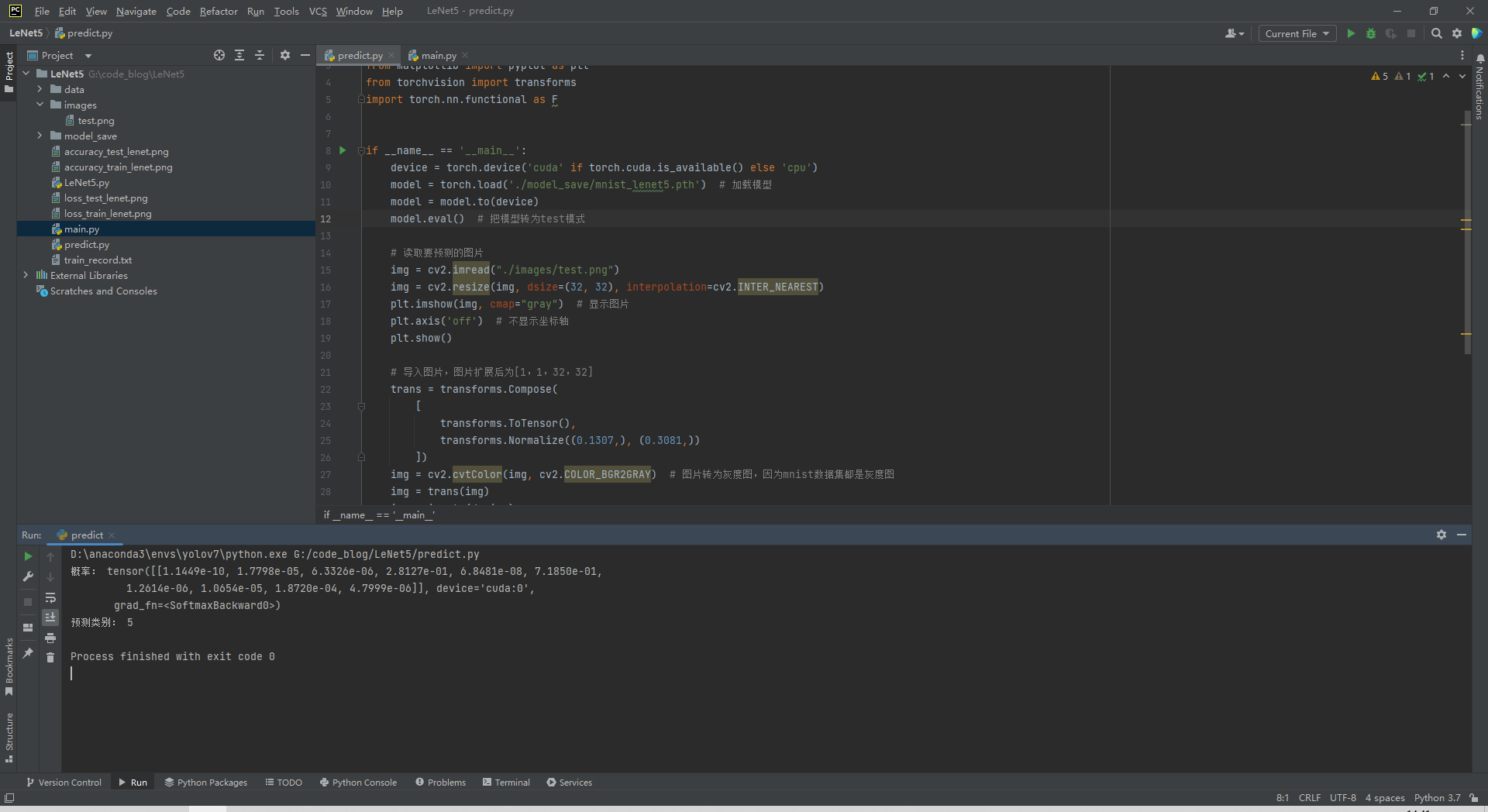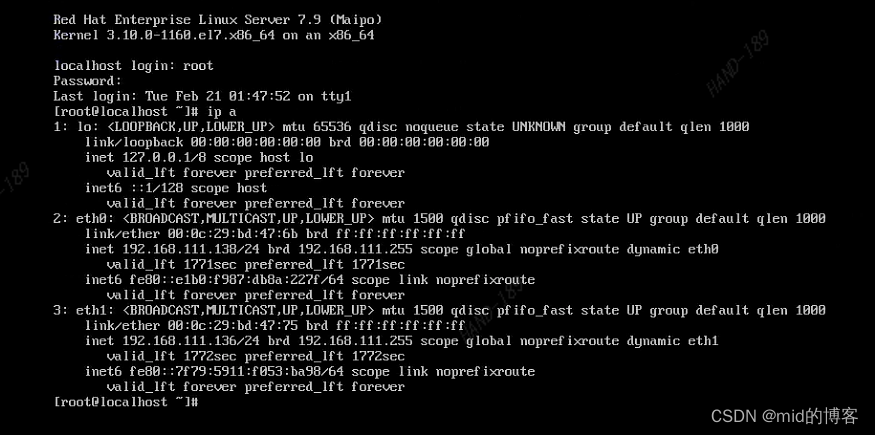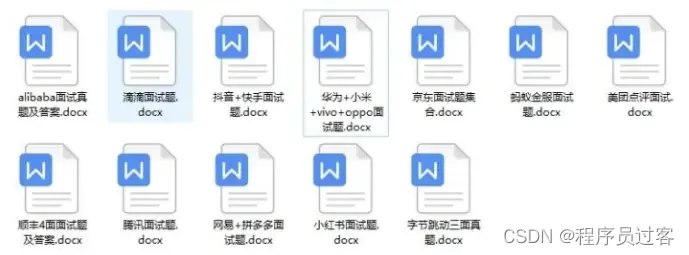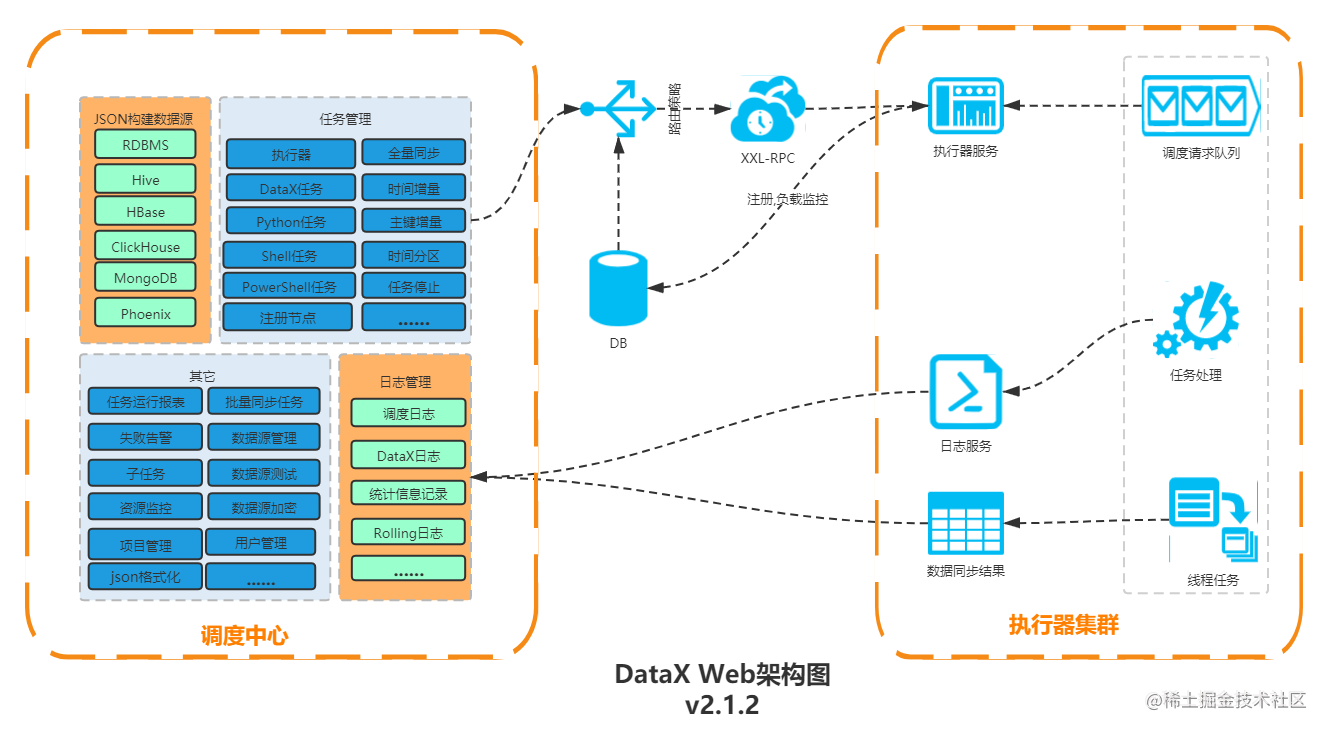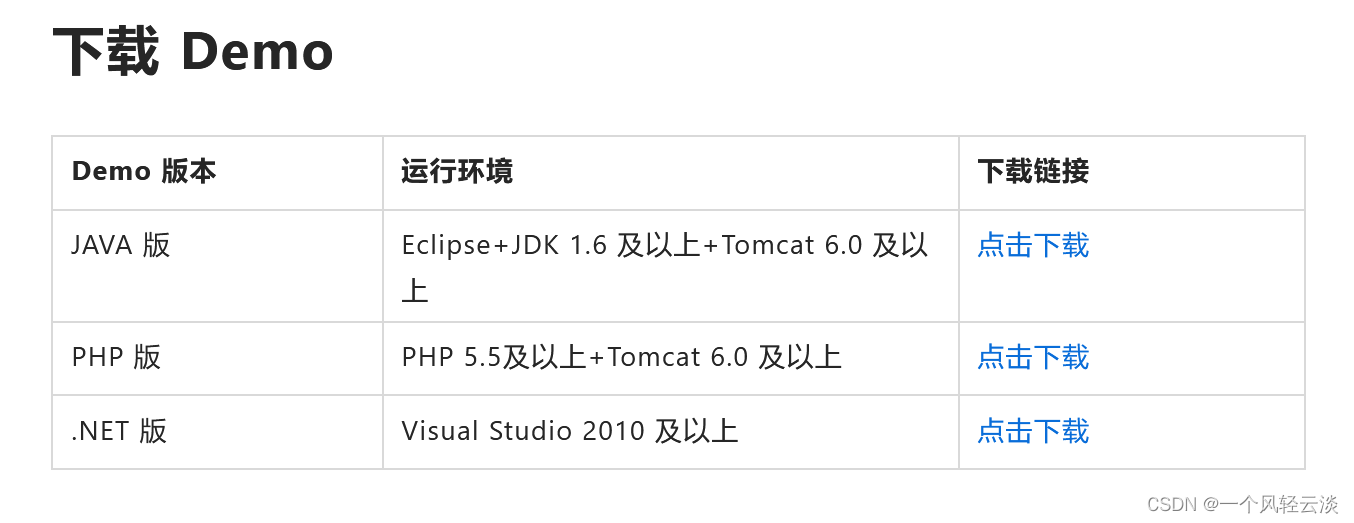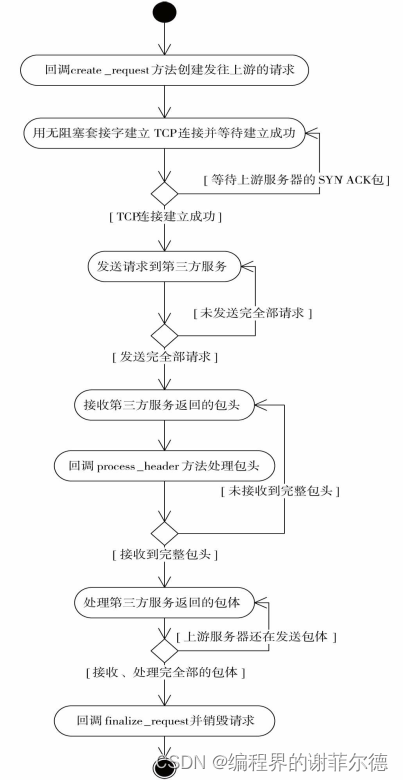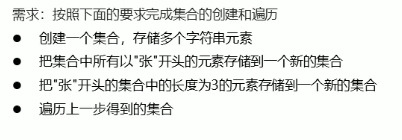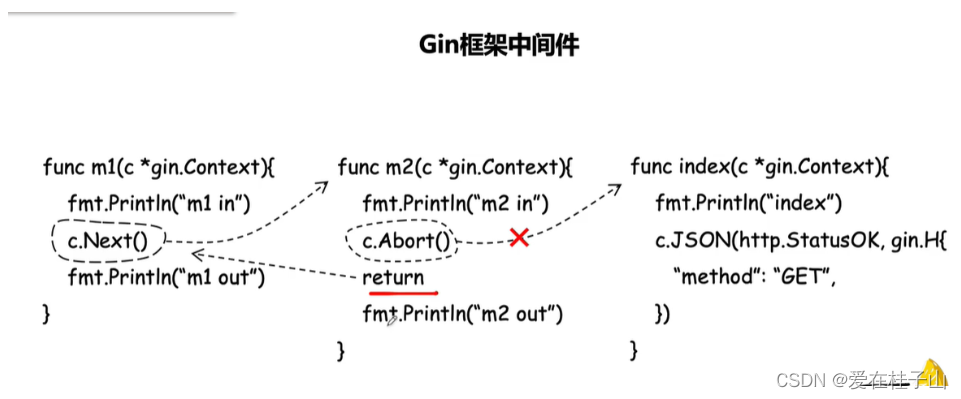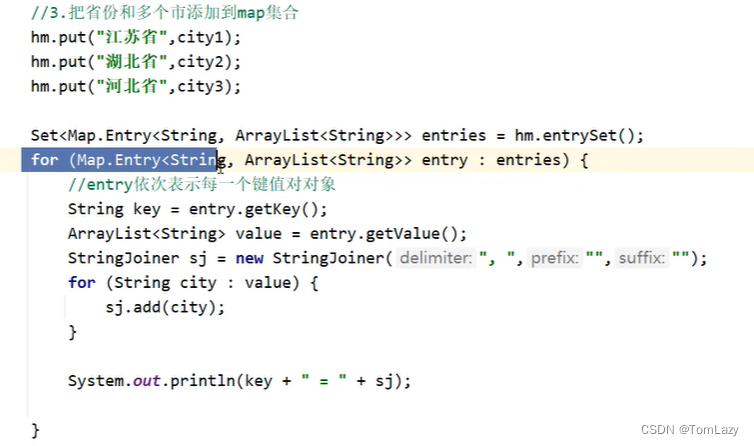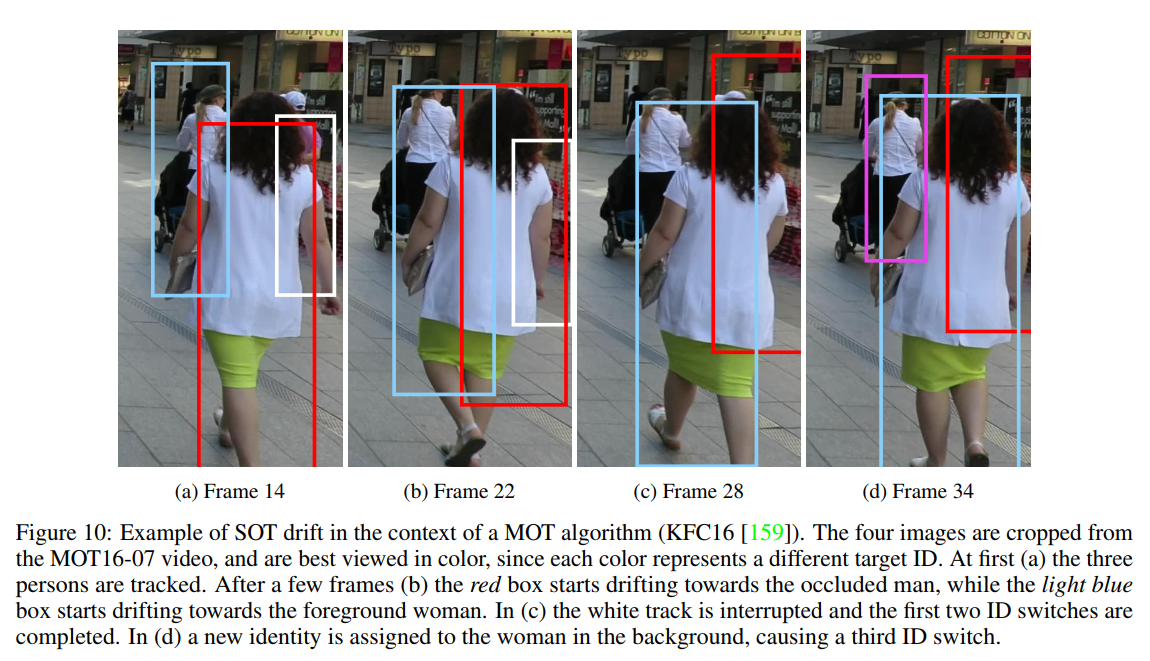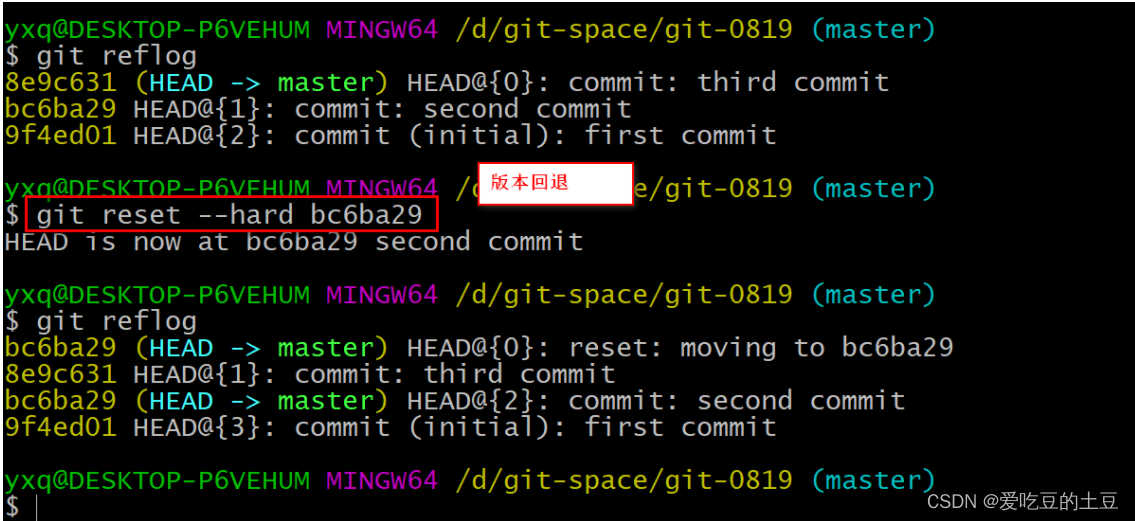前言
最近有小伙伴问到怎么给 controller的接口写单元测试。
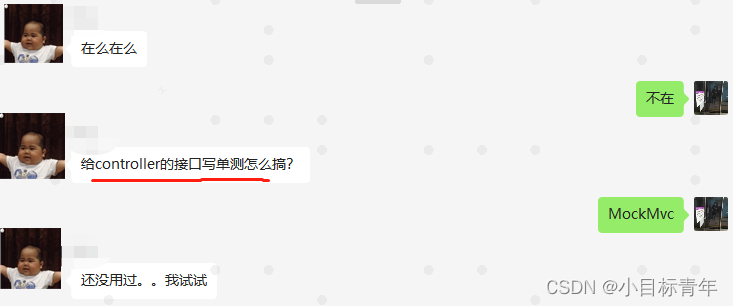
单元测试是开发必不可少的一个环节。
既然有人问到了,那我觉得可能不止一个人不会,那就按照惯例,出手。
正文
内容:
主要是get 和 post 两种请求方式的接口 的 单元测试写法。
get方式请求 介绍 3种传参:
①@PathVariable
②@RequestParam("id")
③类传参 如 User userpost方式请求 介绍 1种传参:
@RequestBody@RequestHeader请求头参数添加参数
上代码 :
先看GET方式请求,简单写三个示例接口
@GetMapping("/getId/{id}")
public String pathVariableTest(@PathVariable Integer id) {
return "id: "+id;
}
@GetMapping("/getId")
public String requestParamTest( @RequestParam("id") Integer id) {
return "id: "+id;
}
@GetMapping("/getUser")
public String requestParamObjectTest( User user) {
return user.toString();
}然后我们来针对这三个get请求接口写单元测试
pom.xml 加入测试使用的jar依赖
<dependency>
<groupId>junit</groupId>
<artifactId>junit</artifactId>
<scope>test</scope>
</dependency>
<dependency>
<groupId>org.springframework.boot</groupId>
<artifactId>spring-boot-starter-test</artifactId>
<scope>test</scope>
</dependency>
创建一个单元测试类 MyControllerTest.java

代码:
import org.junit.runner.RunWith;
import org.slf4j.Logger;
import org.slf4j.LoggerFactory;
import org.springframework.boot.test.context.SpringBootTest;
import org.springframework.test.context.junit4.SpringRunner;
import org.springframework.test.context.web.WebAppConfiguration;
@RunWith(SpringRunner.class)
@SpringBootTest
@WebAppConfiguration
public class MyControllerTest {
protected Logger logger = LoggerFactory.getLogger(MyControllerTest.class);
} 写下来开始写 针对controller 的 单元测试代码:
代码:
@Autowired
DoTestController doTestController;
private MockMvc mockMvc;
@Before
public void setup() {
mockMvc = MockMvcBuilders.standaloneSetup(doTestController).build();
}
首先针对这种场景的GET请求,传入参数的,我们怎么写单测?
@RequestParam("id")

代码:
@Test
public void getTest() throws Exception {
MvcResult mvcResult = mockMvc.perform(
MockMvcRequestBuilders.get("/getId")
.param("id", "123")
)
.andExpect(MockMvcResultMatchers.status().isOk())
.andDo(MockMvcResultHandlers.print())
.andReturn();
logger.info("调用返回的结果:{}", mvcResult.getResponse().getContentAsString());
}
ps: 多个 @RequestParam 就同样 一直 .param即可
示例:
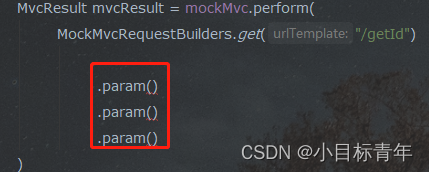
当然也可以通过map传值,传多个: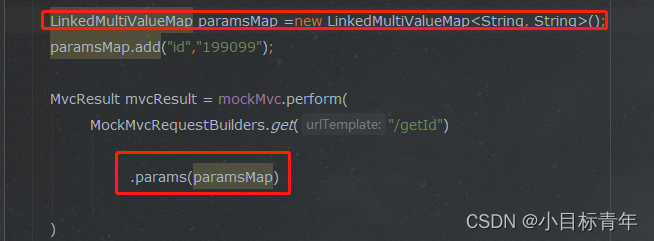
跑一下单测看看效果:
然后是@PathVariable 传参方式:
单测写法:
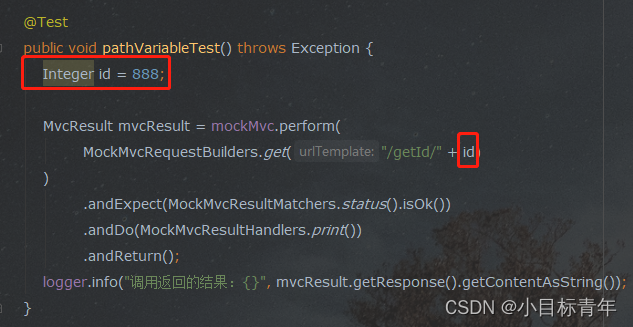
代码:
@Test
public void pathVariableTest() throws Exception {
Integer id = 888;
MvcResult mvcResult = mockMvc.perform(
MockMvcRequestBuilders.get("/getId/" + id)
)
.andExpect(MockMvcResultMatchers.status().isOk())
.andDo(MockMvcResultHandlers.print())
.andReturn();
logger.info("调用返回的结果:{}", mvcResult.getResponse().getContentAsString());
}
然后是传类的情景:

单测写法:

代码:
@Test
public void getTestObject() throws Exception {
MvcResult mvcResult = mockMvc.perform(
MockMvcRequestBuilders.get("/getUser")
.param("userId", "123")
.param("name", "JCccc")
.param("age", "18")
.param("userCode", "100244")
.contentType(MediaType.APPLICATION_FORM_URLENCODED_VALUE)
)
.andExpect(MockMvcResultMatchers.status().isOk())
.andDo(MockMvcResultHandlers.print())
.andReturn();
logger.info("调用返回的结果:{}", mvcResult.getResponse().getContentAsString());
}然后看下POST 请求方式的接口 单测写法

顺便把请求头参数方式一并写了:
代码:
@Test
public void postTest() throws Exception {
User user = new User();
user.setUserId(100011L);
user.setName("JCccc");
user.setUserCode("100244");
user.setAge(18);
String strJson = JSON.toJSONString(user);
MvcResult mvcResult = mockMvc.perform(
MockMvcRequestBuilders.post("/getRequestBodyValue")
.header("token", "收藏点赞")
.accept(MediaType.parseMediaType("application/json;charset=UTF-8"))
.contentType(MediaType.APPLICATION_JSON)
.content(strJson)
)
.andExpect(MockMvcResultMatchers.status().isOk())
.andDo(MockMvcResultHandlers.print())
.andReturn();
logger.info("调用返回的结果:{}", mvcResult.getResponse().getContentAsString());
}效果:


